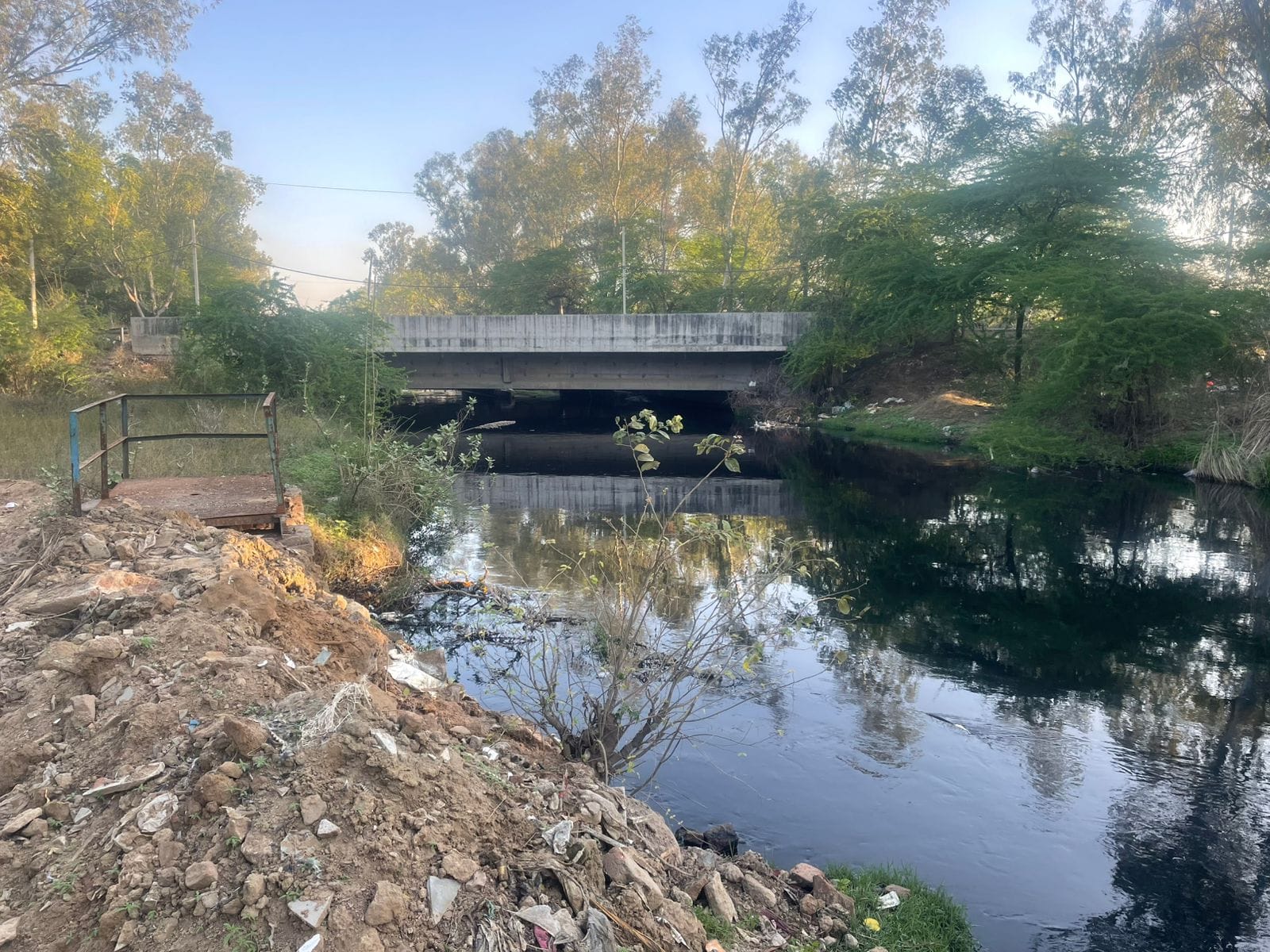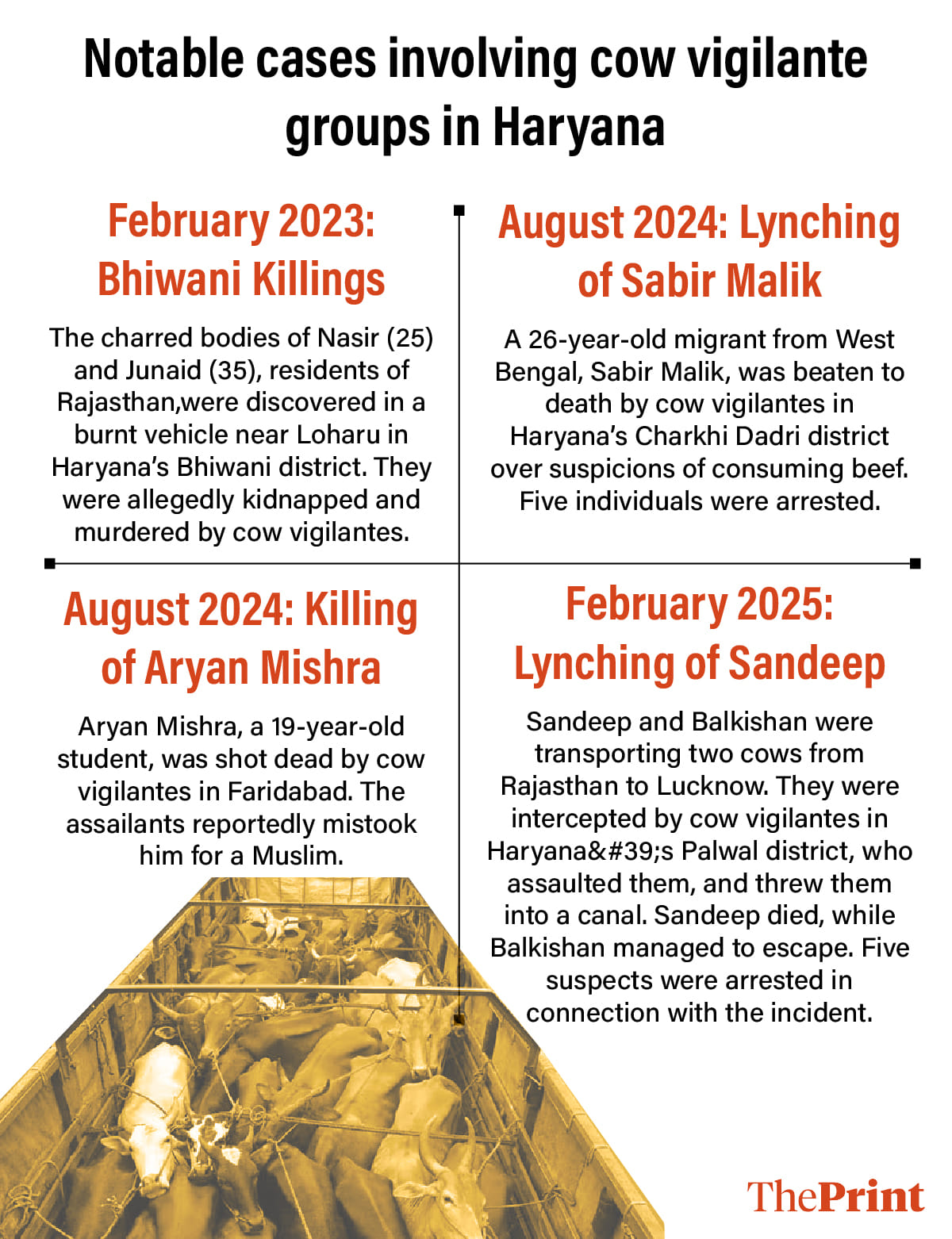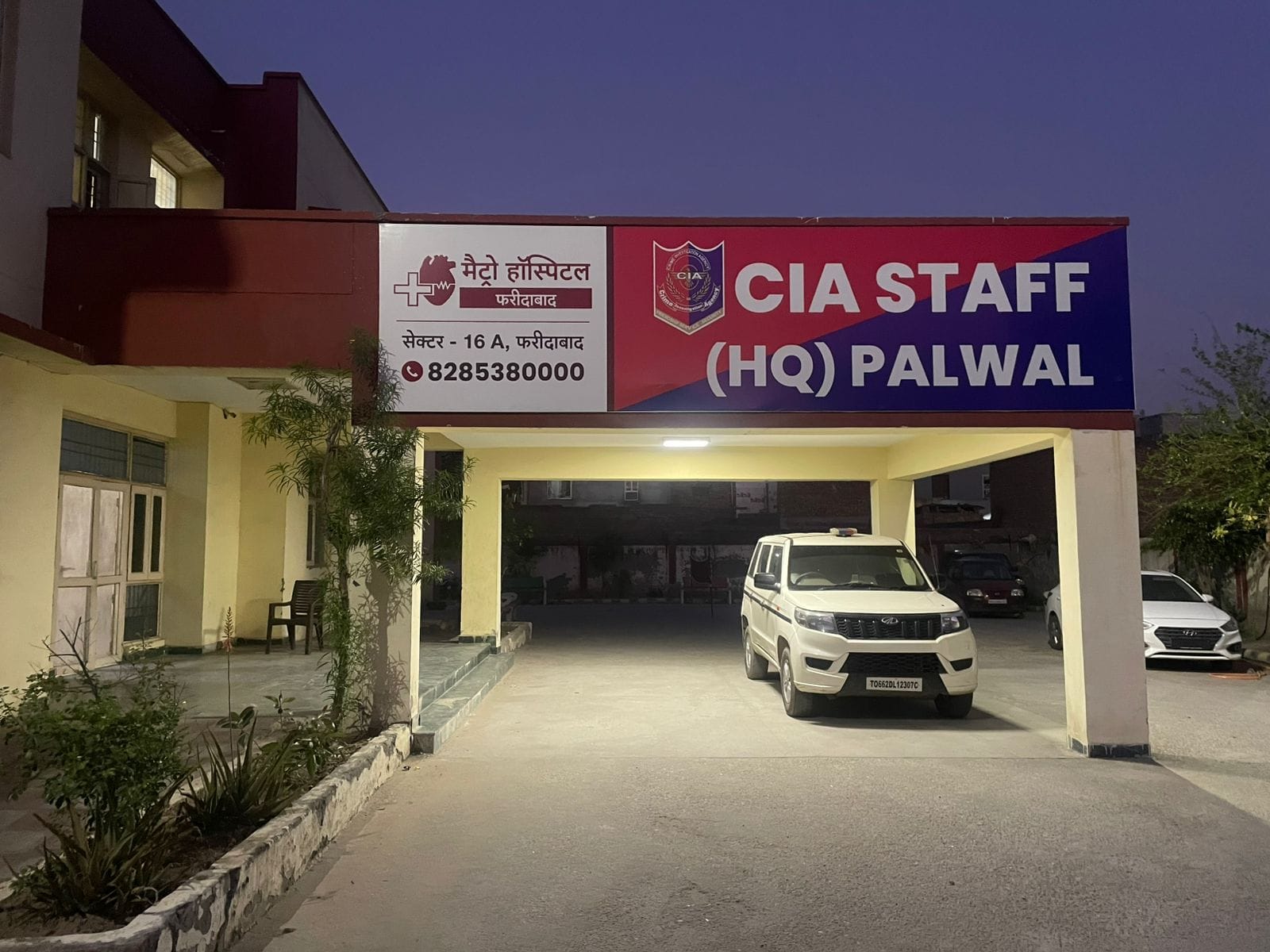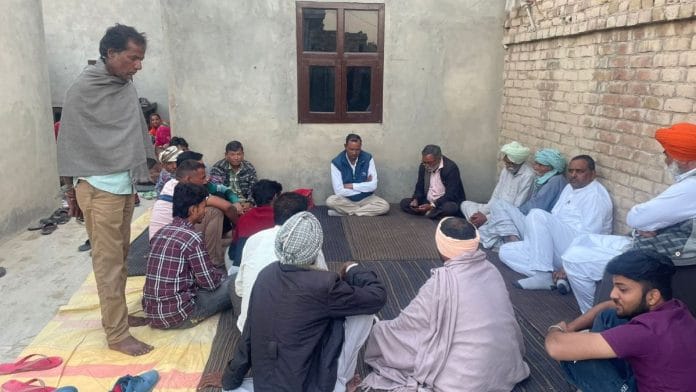New Delhi: A day after cremating his son who was killed by gau rakshaks in Haryana, Bhavar Lal, a devout Hindu from Rajasthan, alternated between rage and grief.
“These aren’t gau rakshaks (self-styled protectors of cows), they are narabhakshaks (cannibals),” said Lal, who sat still for hours in the courtyard of his newly built concrete house in a small village near Kesrisinghpur in Rajasthan. His two other sons were on their way to Haridwar, Uttarakhand, with Sandeep’s ashes, following Hindu tradition.
Lal’s 28-year-old son Sandeep was murdered by a group of vigilantes near Palwal while he and his colleague were transporting two cows to Lucknow. The irony that the five men arrested for the crime were acting on information provided by the special police officer is not lost on Lal.
He was a painter, I don’t know how he got caught up in all of this.
A group of men on bikes intercepted the truck Sandeep and his companion Balkishan were driving, and beat them up with sticks, swords, and hammers. Thinking the two men were dead, the gau rakshaks dumped the bodies in a sewage canal 17 km away near Hajiupur village in Sohna. But Balkishan survived the brutal beating. He dragged himself out of the canal and made his way to Palwal where he approached the police for help.
So far, the police have arrested five suspects under Sections 103 (murder and mob lynching), Section 61 (criminal conspiracy), Section 140 (abduction with the intent to murder), and Section 118 (grievous injury) among others of the Bharatiya Nyaya Sanhita.

Sandeep’s body was recovered on 2 March, after a 10-day search operation. So far, the police have arrested five suspects under Sections 103 (murder and mob lynching), Section 61 (criminal conspiracy), Section 140 (abduction with the intent to murder), and Section 118 (grievous injury) among others of the Bharatiya Nyaya Sanhita.
The murder of a Hindu man—the second such incident in the Palwal-Faridabad belt in just over six months—has sent ripples of anger and unease not only in Kesrisinghpur villages, but also among local Bajrang Dal members in Palwal.
The Bajrang Dal in Haryana has distanced itself from the incident, claiming that the accused are not part of any sanghatan (organisation).
“These people (the accused) don’t know the meaning of cow protection,” said Bharat Bhushan, Bajrang Dal’s state convenor for Haryana. “They are ruining its name.”
Cow vigilantes in Haryana are taking the law into their own hands, empowered by a 2015 Act that bans cow trafficking, slaughter, and the possession or consumption of beef in the state. In February 2023, the charred bodies of Nasir and Junaid, residents of Rajasthan, were found in a burnt vehicle in Bhiwani, Haryana. They were allegedly abducted and murdered by local cow vigilante groups. In August 2024, Sabir Malik, 25, a ragpicker from West Bengal, was lynched by a mob for allegedly consuming cow meat.

Lynchings were previously viewed as communal violence targeting Muslims. But this changed in August 2024, when 19-year-old Aryan Mishra was shot dead in Faridabad. The murderer claimed he had mistaken Mishra for a Muslim and regretted killing a Brahmin.
Villagers sit on a cot near Bhavar Lal’s house, grappling with their belief in cow protection as a duty of their faith and the painful reality of losing a son because of it.
“Cows are mothers to us,” said Sanjay Pawar, a resident of the village. “But they (the accused) cannot murder people like this. We have lost a son to these criminals.”
Also read: Faridabad gau rakshak now ‘regrets’ killing a Brahmin. ‘Sad we killed our brother’
Tipped by police
In the dead of night on 22 February, Sandeep and Balkishan stopped at a police checkpoint near Palwal, Haryana, and asked for directions. They had lost their way to Lucknow.
A Special Police Officer (SPO), assuming that the men were transporting cows for slaughter, first guided them and then made a call to the local gau rakshaks.
“There is a difference between a proper police officer and an SPO,” said an inspector with the Crime Investigation Agency (CIA), Palwal, who is leading the investigation. “SPOs help with routine policing – general duty, roadblocks. This SPO was at the checkpoint and driving the police vehicle.”

The inspector, who did not want to be named, made it clear that the police officers on duty had no idea that the SPO made a call to the gau rakshaks. He also said that the SPO, being a Hindu, thought he was doing the right thing by getting the cows to a gaushala (cow shelter), but did not expect any violence.
The pick-up truck was intercepted by six gau rakshaks, three from the front and three from the back.
According to the inspector, the gau rakshaks then called their ‘guru’, a man residing near Sohna, Haryana. The ‘guru’, who considers himself the leader of the local gau rakshak group, came with a friend and weapons, including swords and hammers.
Sandeep and Balkishan were taken to a canal near the village of Hajipur, 17 km away from Palwal. They were beaten with weapons, and their bodies were dumped in the canal.
Balkishan, who knew how to swim, made it out alive despite his injuries.
“Balkishan first went to the Sohna Police Station, who after questioning him said that the case was not part of their jurisdiction,” DSP (Crime) Manoj Verma told ThePrint. “He was taken to Camp Police Station, Palwal, where an FIR was filed on 23 February.”
The search for Sandeep took 10 days. Assisted by the National Disaster Rescue Force (NDRF), the Palwal police combed 2-3 km of the canal every day.
“The canal mainly contains sewage water. It’s dirty and very hard to see clearly,” said the CIA inspector. “Because of this, the search operation took time. We finally found the body 15 km away from where it was dumped.”
During the search for the dead body, the police also started arresting the suspects. Through call detail records (CDR) and the SPO who first contacted the gau rakshaks, the police were able to arrest five people and recover the murder weapons.
“It’s only a matter of time before we catch the remaining three suspects,” said the CIA inspector, before putting on his boots and heading out to continue the search.
In the name of dharma
The Haryana police have a complex and at times a strained relationship with local gau rakshak groups. Since the state passed the Haryana Gauvansh Sanrakshan and Gausamvardhan (HGSG) Act, police have had to work alongside gau rakshaks while preventing them from overstepping their boundaries.
“First these people (gau rakshaks) use to set up unauthorised nakas (checkpoints) and stop transports themselves,” said DSP Manoj Verma. “We served them Section 168 of the Bharatiya Nagarik Suraksha Sanhita (prevention of cognizable crime) notices.”
Bhushan, the Bajrang Dal’s state convenor, insisted that genuine gau rakshaks have collaborated with the police and local government to protect cows.
“I’ve made it clear that nobody can act unilaterally,” he said. But then, he admitted that when a mob sees a cow being transported, they get riled up. Bhushan blamed illegal transportation for the rising violence.
“The Bharatiya Janata Party (BJP) is in power in Rajasthan, Haryana and Uttar Pradesh. It has to control the illegal transportation of cows, not the people.”
None of this has stopped the police from tipping off gau rakshaks, even when trucks show them the necessary paperwork for transporting cows, like in Sandeep and Balkishan’s case.
“There are two types of gau rakshaks,” said the CIA inspector. “Those who do good and genuinely care for the cows. And those who don’t even know what they need to do in the name of cow protection.”
According to him, it was the latter group that lynched Sandeep. Calling themselves ‘Gwal Sena’, the group was unregistered and mainly composed of young men from Palwal, influenced by social media and recruitment initiatives.
The difference between Gwal Sena and legitimate, registered cow protection organisations is the mentality, according to DSP Verma. “A criminal doesn’t look for a reason to commit a crime,” he said.
The CIA inspector had a slightly different view. Cow slaughter was always happening but since a Hindu-dominated government came into power and passed a law preventing it, people wear their dharma (religion) on their sleeves, he said.
Buffaloes are also slaughtered. No one raises their voices for them.
Unanswered questions, uneasy minds
The police were the ones who called the gau rakshaks,
In the courtyard at Bhavar Lal’s house, the women sit in a separate group, eyes cast down as the men talk about Sandeep’s death. Lal, who works at the village petrol pump, has many questions unanswered and has not yet been able to get in touch with Balkishan.
“His roka (engagement) was done,” said Bhavar Lal, adding that Sandeep’s wedding was planned between May and June. “He was a painter, I don’t know how he got caught up in all of this.”
Balkishan lived in another village, around 10-12 km away from Sandeep. He would come by and offer odd jobs to the young people in the village – mainly involving transportation and driving.
According to Bhavar Lal, Balkishan and Sandeep did not know each other well, but Sandeep likely accepted the job for the chance to increase his earnings before the wedding.
Somnath Nayak, part of the Kesrisinghpur municipality and a journalist with Dainik Bhaskar, said the police should have done more to protect Sandeep and his companion.
“The police were the ones who called the gau rakshaks,” Nayak told ThePrint. “They should have sent protection along with the truck to ensure nothing happened. The negligence of the police in this case is clear.”
Nayak went on to clarify that he was fine with gau rakshaks continuing their work, but the method by which they acted was wrong. Because of it, a home has lost its happiness.
The sentiment that gau rakshaks are important to protect the cows is shared across the village. Most people remember cases involving the lynching of Muslims, specifically the 2017 case in Alwar, Rajasthan. Pehlu Khan, a dairy farmer, was brutally murdered by cow vigilantes after his attackers accused him of smuggling cows for slaughter, despite his documents proving otherwise.
“If Hindus are also becoming victims now, then this is no longer about religion – it’s about lawlessness,” said Jowahar Agarwal, the chairman of the Kesrisinghpur municipality. “Mob justice cannot replace the police.”
The author graduated from Batch 1 of ThePrint School of Journalism.
(Edited by Ratan Priya)







Illegal trafficking of cattle is a very serious issue across India. It is worst in bordering states like West Bengal and Assam.
The law enforcement agencies have failed big time in curbing this menace. And this has created the opportunity for these vigilante groups to exert their power and influence. The situation in Haryana is so bad that cow vigilantism has become an industry in itself – employing thousands of young men.
The state must exert itself for the situation to improve. Once the police starts taking stringent action against cattle smuggling and cow slaughter, these vigilante groups will lose steam and eventually cease to exist.
The gau rakshaks – police being hand in glove is a well established truth. This is less about gau raksha and more about mafia. The police tip-off the gaurakshaks seize the cows keep it at a shelter for a couple of weeks and then the cows are back in the market for SALE. This is a Big Money making business with political protection. Many Muslims have stopped or avoid transporting cows these days knowing the risks involved
Thank Modi and his Toxic RSS Goons for that they have destroyed democracy and hinduism in India..